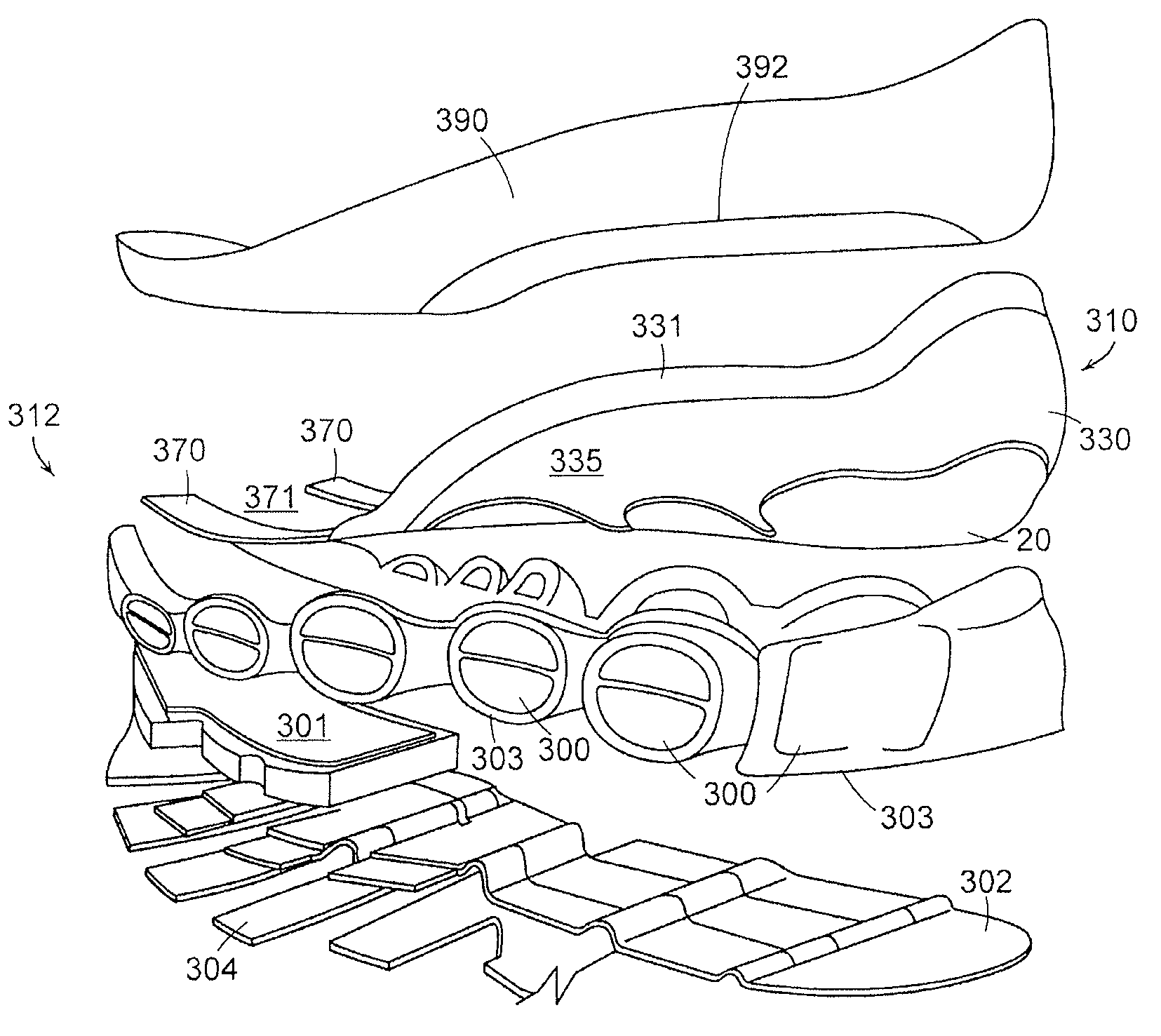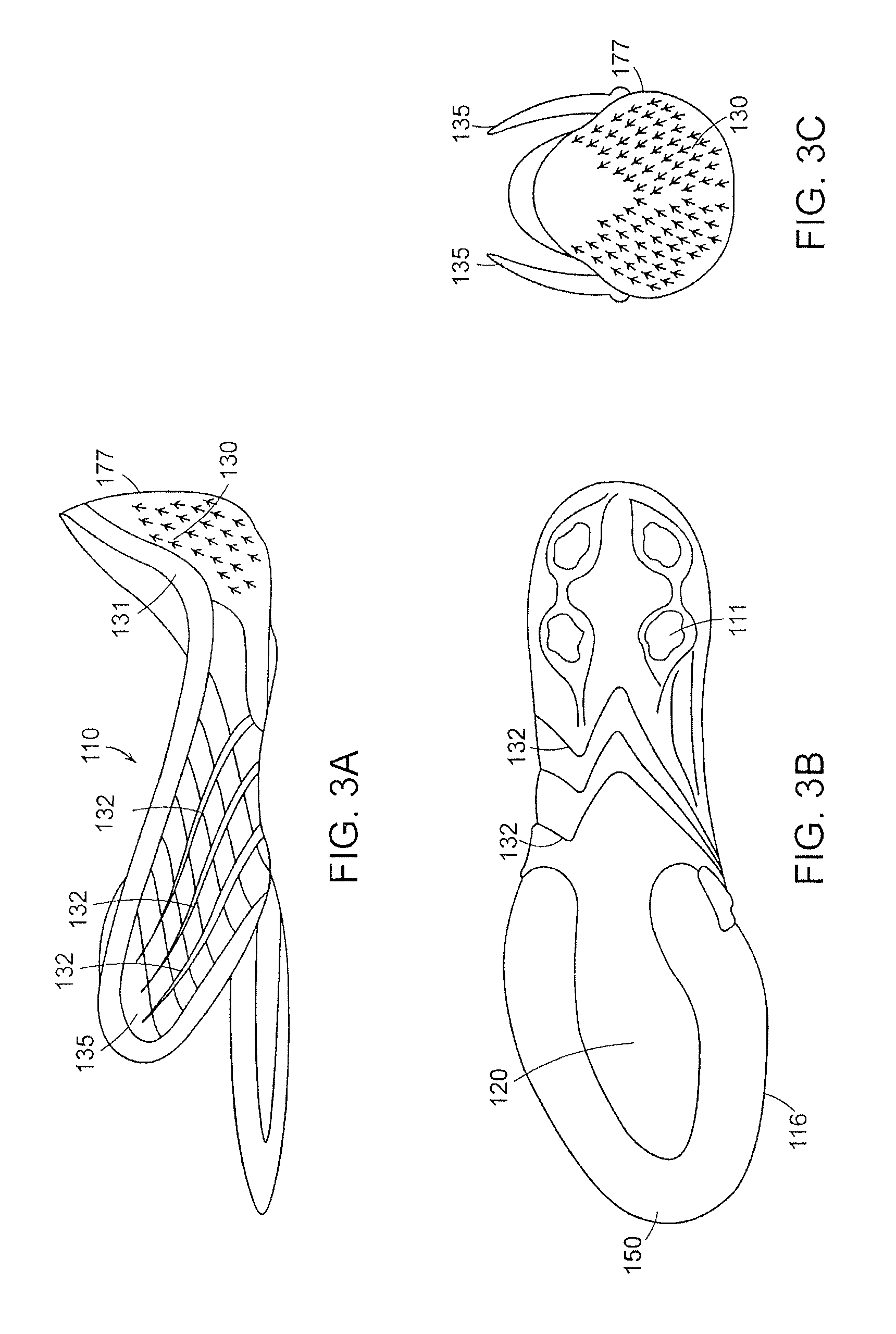Sole element for a shoe
a technology of sole element and shoe, which is applied in the field of sole element of shoe, can solve the problems of increasing cost, adding complexity, and significant weight of shoe, and achieves the effects of reducing thickness, facilitating use, and facilitating us
- Summary
- Abstract
- Description
- Claims
- Application Information
AI Technical Summary
Benefits of technology
Problems solved by technology
Method used
Image
Examples
Embodiment Construction
[0027]In the following, embodiments of the sole and the sole element in accordance with the invention are further described with reference to a shoe sole for a sports shoe. It is, however, to be understood that the present invention can also be used for other types of shoes that are intended to have, for example, good cushioning properties, a low weight, and a long life. In addition, the present invention can also be used in other areas of a sole, instead of or in addition to the heel region.
[0028]FIGS. 1 and 2 depict one embodiment of a shoe 1 (FIG. 1) and a sole element 10 (FIG. 2) for use in the shoe 1. As shown, the sole element 10 is provided as a one-piece component. Starting from a sole area 20 that extends along a region corresponding to an area below a wearer's foot, the sole element 10 includes a heel cup 30 configured to encompass a heel of the wearer's foot. In contrast to known designs, this heel cup 30, however, is not fully integrated into the upper 40 of the shoe 1. ...
PUM
| Property | Measurement | Unit |
|---|---|---|
| width | aaaaa | aaaaa |
| length | aaaaa | aaaaa |
| area | aaaaa | aaaaa |
Abstract
Description
Claims
Application Information
 Login to View More
Login to View More - R&D
- Intellectual Property
- Life Sciences
- Materials
- Tech Scout
- Unparalleled Data Quality
- Higher Quality Content
- 60% Fewer Hallucinations
Browse by: Latest US Patents, China's latest patents, Technical Efficacy Thesaurus, Application Domain, Technology Topic, Popular Technical Reports.
© 2025 PatSnap. All rights reserved.Legal|Privacy policy|Modern Slavery Act Transparency Statement|Sitemap|About US| Contact US: help@patsnap.com



